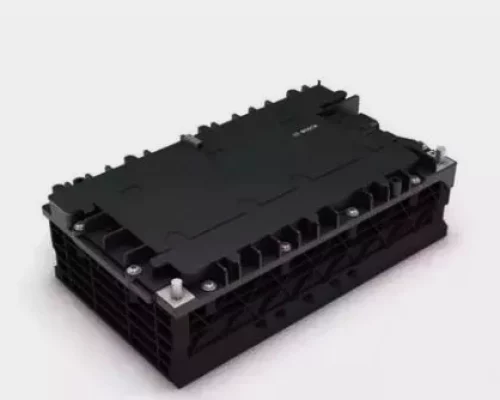배터리 팩 및 배터리 인클로저
배터리 팩은 여러 개의 배터리 모듈로 조립된 완전한 장치로, 전기 에너지의 저장 및 공급을 위해 설계되었습니다. 일반적으로 여러 개의 배터리 모듈, 커넥터, 배터리 관리 시스템, 냉각 시스템, 전기 인터페이스 및 케이스로 구성된 배터리 시스템의 상위 구성 요소입니다.
배터리 인클로저는 배터리 팩의 주요 구조 구성 요소입니다. 인클로저가 정적 및 동적 조건(강성, 모달 특성 등)에서 모두 안정적일 때만 전원 배터리가 정상 조건에서 작동하여 전원 시스템이 원활하게 작동할 수 있습니다. 배터리 팩 인클로저의 주요 기능은 배터리 모듈, 전기 모듈, 냉각 모듈 등과 같은 전원 배터리 시스템의 구성 요소를 지원하는 것입니다. 또한 외부 충돌이나 압축 시 배터리와 전기 시스템이 손상되지 않도록 보호하는 역할도 합니다.
배터리를 경량화해야 하는 이유
경량화는 효과적인 에너지 절약 및 배기가스 저감 기술입니다. 전 세계 자동차 산업의 에너지 효율과 배기가스 배출에 대한 정책은 점점 더 엄격해지고 있으며, 연료 소비 및 배기가스 기준은 지속적으로 발전하고 있습니다. 자동차 경량화 기술은 자동차의 에너지 효율을 높이고 배기가스를 줄이는 중요한 수단으로서 안전 및 비용 관리 요건을 충족하면서 경량화를 달성할 수 있습니다. 동시에 차량 중량을 줄이면 동력 시스템의 부하를 줄이고, 차량 동력 성능을 개선하고, 제동 거리를 줄이고, 주행 안정성을 향상시킬 수 있습니다.
경량화는 신에너지 차량, 특히 배터리 팩이 전체 무게에 크게 기여하는 순수 전기 자동차의 비용 관리에 유리하며, 그 결과 동급의 기존 연료 차량에 비해 무게가 더 무거워집니다. 주행 거리가 556km인 Tesla Model 3를 예로 들면, 차량의 공차 중량은 1761kg이고 60kWh 전력 배터리 팩의 무게는 480kg입니다. 배터리 팩의 비용이 kWh당 800위안이라고 가정하면 배터리 비용은 48,000위안이 됩니다. 경량화는 에너지 소비를 줄여 동일한 주행 거리에서 더 적은 에너지가 필요하므로 결과적으로 배터리 팩의 무게와 비용을 줄일 수 있습니다.
배터리 인클로저를 경량화하는 방법은 무엇인가요?
복합 소재를 활용하여 배터리 팩 인클로저 경량화
복합 소재는 서로 다른 특성을 가진 두 가지 이상의 소재를 물리적 또는 화학적 방법을 통해 혼합하여 거시적인 차원에서 새로운 특성을 가진 소재를 만듭니다. 다양한 소재는 성능 측면에서 서로를 보완하여 개별 구성 요소의 특성을 넘어 복합 소재의 전반적인 특성을 향상시키는 시너지 효과를 창출하여 다양한 요구 사항을 충족합니다.

자동차 산업의 에너지 효율성, 친환경성, 경량화가 발전하면서 유리섬유 강화 복합재, 탄소섬유 강화 복합재, PC 장섬유 강화 열가소성 소재 등 배터리 팩 인클로저를 위한 다양한 경량 소재가 등장했습니다.
SMC 복합 소재
시트 몰딩 컴파운드(SMC)는 불포화 폴리에스테르 수지를 바인더로 사용하여 유리 섬유, 필러, 안료 및 기타 첨가제를 혼합한 시트 형태의 성형 플라스틱 소재입니다. 유리 섬유 원사를 함침시키고 양면을 얇은 필름으로 덮어 불포화 폴리에스테르 유리 섬유 복합 재료를 형성하여 만들어집니다. SMC 소재는 기존 금속 소재에 비해 다음과 같은 장점이 있습니다:
1. 높은 비강도, 높은 비계수.
2. 낮은 열전도율, 작은 팽창 계수, 치수 안정성.
3. 화학적 내식성, 녹슬지 않습니다.
4. 우수한 충격 흡수, 내충격성 및 낮은 공진.
5. 금속 소재보다 우수한 단열 성능.
6. 난연 성능은 V0 수준을 달성 할 수 있습니다.
7. 높은 설계 유연성(구조 최적화를 통해 전체적으로 성형 가능, 2차 조립 감소).
탄소 섬유 강화 복합 소재
탄소섬유 복합 소재는 배터리 팩 케이스의 기존 금속 소재를 대체할 수 있는 이상적인 대안이 되었습니다. 금속 소재에 비해 탄소 섬유의 밀도는 약 1.7g/cm³입니다. 인장 강도 3000MPa, 탄성 계수 230GPa로 가볍고 강도가 높으며 고온, 마찰, 지진에 강하고 열팽창 계수가 낮은 것이 특징입니다.
PC+LFT-D 장섬유 강화 열가소성 소재
PC 소재의 우수한 난연 성능, 치수 안정성 및 기계적 특성은 LFT-D 공정에서 장섬유 유지율이 높은 것과 결합하여 배터리 팩 인클로저의 적용 요건을 완벽하게 충족합니다. 이 소재는 우수한 난연성, 높은 강성, 높은 인성, 부품 균열 가능성 감소를 특징으로 하여 상부 및 하부 인클로저를 더 단단히 연결하여 장기간 사용 시 배터리 팩의 기밀성을 향상시킵니다.
알루미늄 소재를 활용하여 배터리 팩 인클로저 경량화
압연 알루미늄 시트, 압출 알루미늄 프로파일, 주조 알루미늄의 세 가지 알루미늄 소재는 다양한 배터리 팩 프로젝트에 널리 적용되어 파워 배터리 시스템 케이스의 주류 기술 접근 방식으로 자리 잡았습니다. 다이캐스트 알루미늄은 하이브리드 차량용과 같은 소형 파워 배터리 케이스에 광범위하게 사용되는 반면, 대형 파워 배터리 케이스는 주로 알루미늄 프로파일과 알루미늄 시트를 용접 구조로 사용하는 추세를 따르고 있습니다.
1. 뛰어난 경량화 효과
강철의 밀도는 7.8이고 알루미늄의 밀도는 2.7입니다. 기존 자동차에서 차체는 전체 차량 무게의 약 30~40%를 차지합니다. 일반 강철을 고강도 강철로 대체하면 약 11%의 무게를 줄일 수 있는 반면, 알루미늄 합금을 사용하면 약 40%의 무게를 줄일 수 있습니다. 알루미늄 합금을 차량에 500kg 이상 적용하면 전체 중량을 약 40%까지 줄일 수 있습니다.
2. 안전성을 높이기 위한 체력 향상
절대 강도 측면에서 알루미늄 합금은 강철보다 약간 열등하지만 밀도가 낮기 때문에 더 큰 이점을 제공합니다. 강도가 동일한 재료의 경우 강철과 알루미늄 합금의 두께 비율은 1:1.4인 반면 무게 비율은 1:0.5에 불과합니다. 즉, 알루미늄 합금은 절반의 무게로 동일한 강도를 달성할 수 있습니다.
3. 기동성 향상
경량화는 차량 관성을 줄이고 중량 대비 출력비를 높이며 동일한 출력 수준에서 동력 성능을 크게 향상시킵니다. 차체의 강성과 비틀림 저항을 개선함으로써 강화 봉으로 차체를 보강하는 것과 유사하며, 서스펜션 튜닝을 위한 공간을 더 여유롭게 확보하고 차량의 한계를 향상시킬 수 있습니다. 또한, 올 알루미늄 차체를 사용하는 모델은 일반적으로 섀시와 서스펜션에 일부 최적화를 거칩니다.
4. 탁월한 내식성
알루미늄 자체는 안정적이지 않고 산화되기 쉽습니다. 그러나 알루미늄이 산화되면 표면에 조밀한 산화물 층이 형성되어 기판과 단단히 결합합니다. 이러한 높은 안정성 덕분에 알루미늄 베이스 위에 단단한 보호층을 형성할 수 있습니다. 또한 습한 대기 조건에서는 이 보호층이 두꺼워질 수 있습니다.
5. 연성 향상
알루미늄 합금은 재규어 C-Type, D-Type, 그리고 '가장 아름다운 차'의 상징인 E-Type의 알루미늄 차체에서 볼 수 있듯이 매우 아름다운 차체 곡선을 형성할 수 있습니다. 이러한 디자인은 오늘날에도 여전히 미적 아름다움을 유지하고 있습니다. 당시에는 강철로 구현하기 어려웠던 이 스타일링의 유려하고 볼록한 곡선은 여전히 우아함으로 시선을 사로잡습니다.
글로벌 신에너지 자동차, 에너지 저장, 데이터 센터, 전력 컴퓨팅과 같은 신흥 시장의 급속한 발전으로 에너지 보안, 안정적인 운영, 비용 효율성 간의 균형을 맞추는 것이 배터리 팩 제조업체의 시급한 생존 과제가 되었습니다.